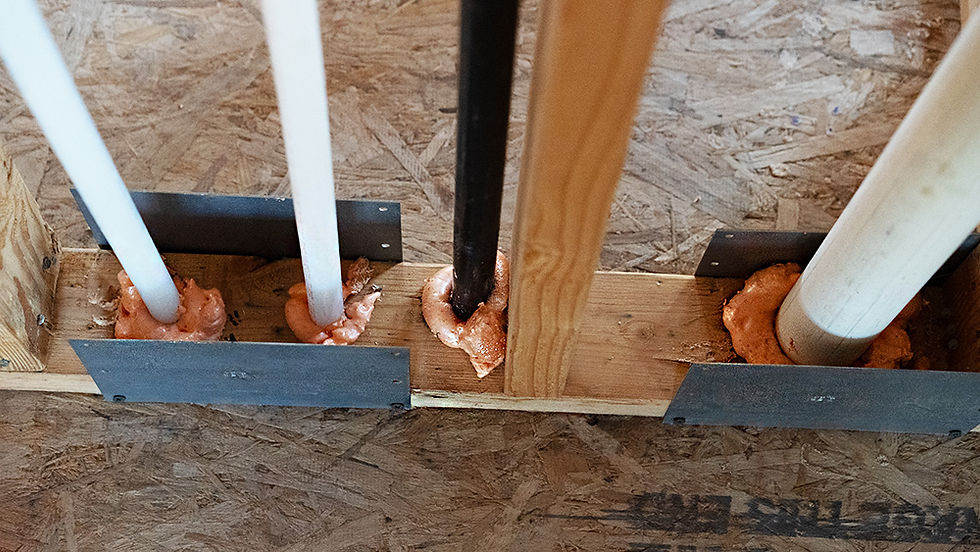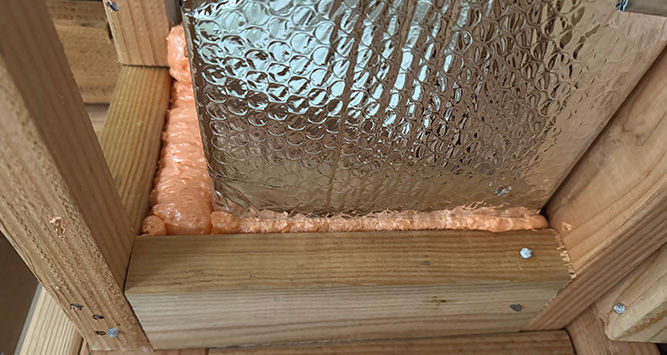Fireblocking vs. Firestopping: What Everyone Should Know
- Seal Team Insulation Specialists
- Jul 9, 2025
- 3 min read

As you build custom homes or commercial buildings, fire safety isn’t just a priority; it’s a requirement. Fireblocking and firestopping are two essential strategies for slowing the spread of flames and smoke.
At Seal Team Insulation, we take a proactive, code-informed approach to fire containment. We work with builders, framers, and inspectors to ensure every job passes inspection and protects occupants when it matters most.
What is Fireblocking?
Fireblocking is primarily used in residential construction to prevent flames and smoke from traveling through concealed spaces, such as wall cavities, soffits, and between floors. Without proper fireblocking, these open cavities have the potential to create dangerous vertical and horizontal fire pathways.
By sealing these gaps, fireblocking buys critical time for occupants to escape and firefighters to respond.
Where You'll See Fireblocking:
Between stories in wall cavities
Around chimneys and inside soffits
Within vertical chases for wiring and plumbing
Between attached garages and living spaces

Materials We Use for Fireblocking:
Mineral wool batts
Code-approved fireblock foams and sealants
Please note: Not all insulation products qualify for fireblocking. Only materials that meet UL-listed and IRC requirements should be installed, ensuring inspections are passed and buildings stay protected.

What is Firestopping?
Firestopping applies primarily to commercial and multi-family projects, where penetrations in fire-rated walls and floors must be sealed to maintain the fire resistance of the entire assembly.
This is not just about plugging a hole; it’s about using certified systems that are installed correctly.
Typical Firestopping Applications:
Between units in apartment buildings
Around elevator shafts and stairwells
In mechanical chases and utility rooms
Seal Team Insulation adheres to strict installation guidelines, working closely with builders to ensure code compliance and long-term safety.
Spray Foam Fire Coatings
Spray foam insulation is a powerful tool for energy efficiency. Still, when left exposed, it may require a thermal or ignition barrier to meet code, particularly in attics, crawl spaces, and basements.
Coatings We Recommend:
No-Burn® THB
In unvented attic assemblies, we apply No-Burn THB (Thermal Barrier) over spray foam insulation to meet the ignition barrier requirement. This fire-protective coating creates a durable thermal barrier that helps delay ignition during a fire event.
Applied directly to foam in unfinished attic spaces
Code-compliant ignition barrier solution
Ideal for spray foam systems where no drywall or gypsum board will be installed
No-Burn® Plus
For exposed engineered wood products, such as TJIs or LVLs, in crawlspaces or unfinished basements, we recommend No-Burn Plus. This intumescent coating is designed to meet thermal barrier and ignition barrier requirements where spray foam is applied to combustible substrates.
Required on engineered floor framing per IRC R316.4
Protects I-joists and structural wood in low-clearance or unconditioned spaces
Maintains adhesion and fire resistance in humid, below-grade environments
Note: Engineered wood like TJIs burns hotter and faster than dimensional lumber. If left unprotected in a crawl space, they can pose a serious risk of fire spread.
These coatings delay ignition and enhance fire resistance where drywall or other thermal barriers are not installed. Seal Team Insulation is certified to install these products, ensuring compliance and adherence to safety standards.
How Seal Team Insulation Supports Fire Safety Compliance
Seal Team Insulation provides more than insulation installation. We partner with your project team to identify fire protection needs, recommend suitable products, and ensure proper installation in accordance with code requirements.

Our Services Include:
ROCKWOOL mineral wool for thermal and fire performance
Fireblock foam and caulking for top plates, chases, and rim joists
Certified No-Burn® coating applications
Proactive planning with builders and inspectors before drywall installation
Building Safer with Seal Team Insulation
Fireblocking and firestopping are fundamental to protecting buildings from rapid fire spread. Properly installed, these systems provide life-saving barriers that slow the progression of fires and help maintain the building’s structural integrity.
We understand the complexities of fire protection codes and deliver solutions that keep your projects safe and compliant.




Comments